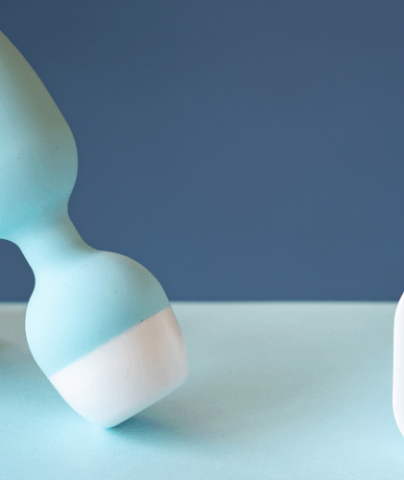
Postpartum recovery methods for your pelvic floor
Other countries, other customs ? This also applies to the topic of postpartum recovery. Today we present three postpartum recovery methods for your pelvic floor. Do not hesitate to share your postpartum recovery experiences in the comments and tell us how it works in your country!
Postpartum recovery methods
There are different postpartum recovery methods and many different solutions. Here are the most common ones:
Individual pelvic floor therapy
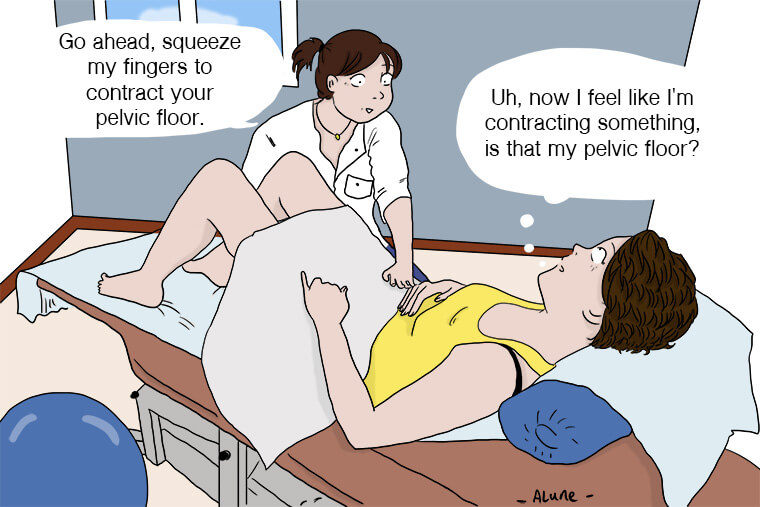
The doctor assesses how well the pelvic floor muscles are tense by palpating the vagina. He looks for any painful or scarred areas after the birth. For many people who are not from France, this may sound strange at first. In France, however, individual pelvic floor therapy with palpation of the pelvic floor is still one of the most effective methods.
Depending on the patient’s needs, the doctor can then stimulate the muscles through various movements with the fingers (stretching, resistance, counter-support…). In addition, the doctor can also combine manual therapy with other methods, e.g. biofeedback (visualization exercises). Here the patient sees when she contracts her pelvic floor muscles. Thus, she can acquire a precise perception of her pelvic floor.
The upsides
A good way to start postnatal recovery. The practitioner guarantees that you contract your pelvic floor correctly. Consequently, once the patient is aware of her contractions, she can train her pelvic floor autonomously.
The downsides
The idea of vaginal examination by a health professional makes some women uncomfortable. Nevertheless, doctors are trained to do this and they are as gentle as possible to make these sessions less inconvenient for you.
Electrical stimulation
How does electrostimulation work, you may be asking yourself. This method aims to stimulate the nerves of the pelvic floor muscles with light electrical currents to strengthen the pelvic floor. Electric currents flow through the vaginal probe. This leads to a mechanical contraction of the muscles. Electrical stimulation of the pelvic floor can be done at home or together with a healthcare professional.
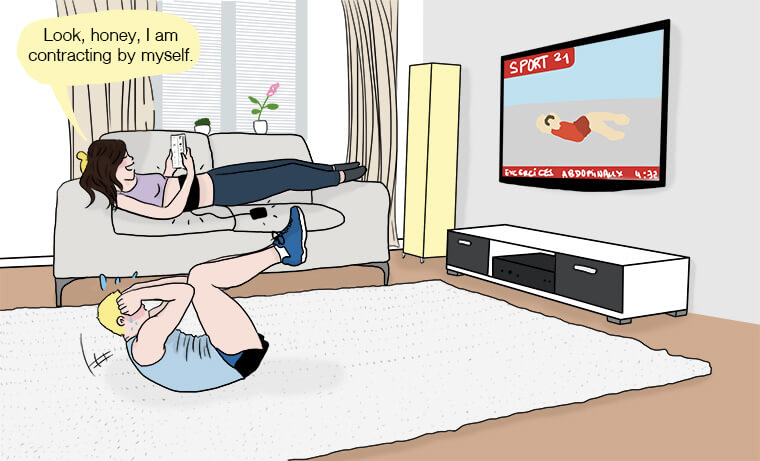
The upsides
Particularly adapted in cases of a very weakened pelvic floor, this method localizes the pelvic muscles. Electrical stimulation can be the first step before training with biofeedback or a supplement, especially in case of a very loose pelvic floor.
The downsides
The electric currents in the vagina can be unpleasant for some women. According to the patient’s sensitivity the current’s intensity must be adapted. With this method, the woman doesn’t contract voluntarily her pelvic floor, so it is important to complete this method with voluntary contractions.
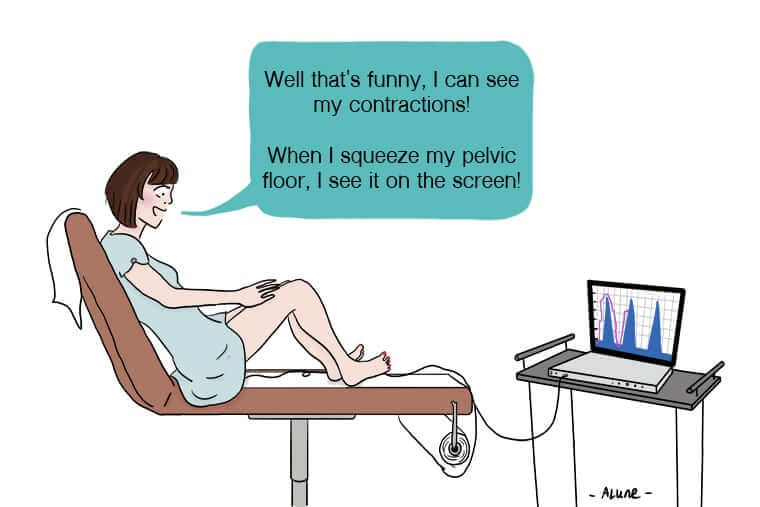
Muscular biofeedback
Instant check-back devices, called “biofeedback devices”, measure precisely the strength of the pelvic muscles thanks to vaginal trainers provided with surface electrodes of pressure sensors. Visual or sound information indicates to the patient when to contract and when to relax her pelvic floor. The woman is active in her postpartum recovery: she contracts her pelvic floor voluntarily. Biofeedback devices are used in practitioner’s offices and can now be used at home, like the Emy Kegel trainer for example.
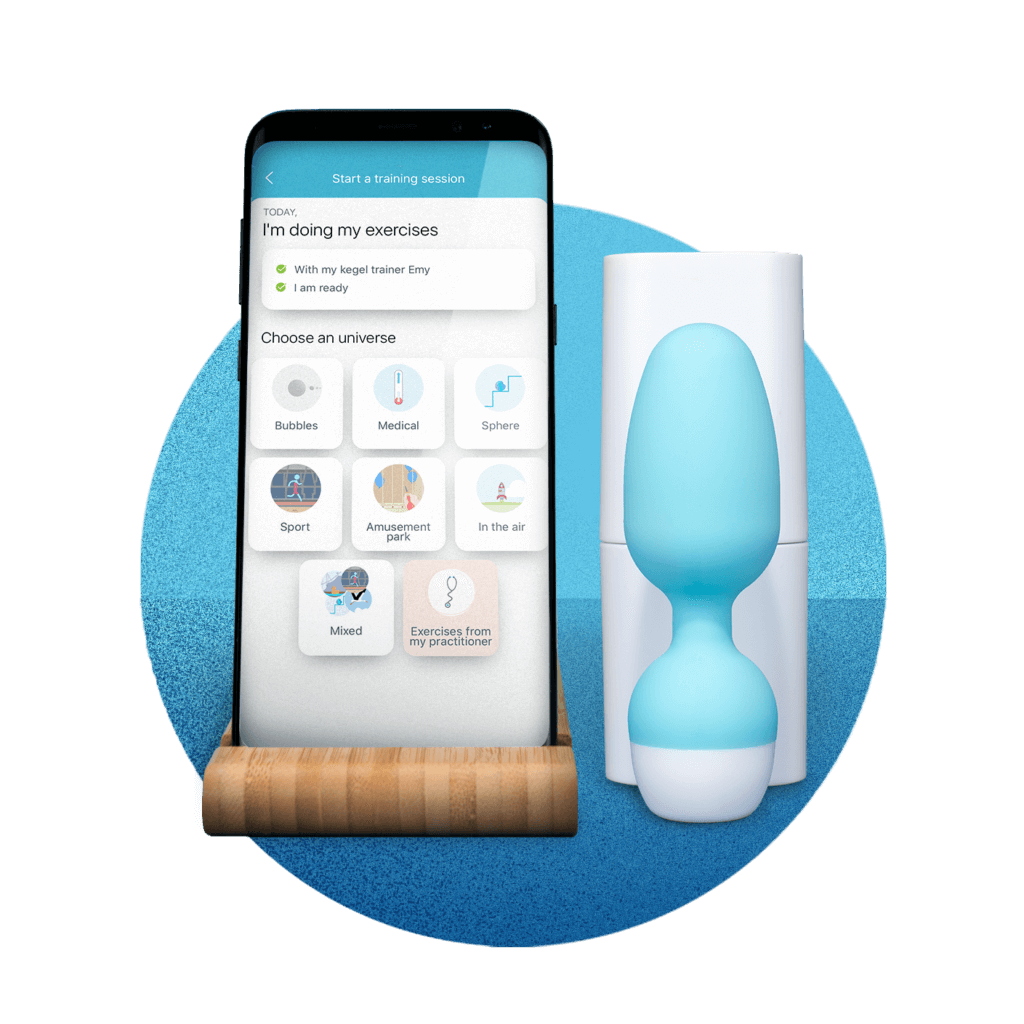
The upsides
Biofeedback allows the patient to be fully aware of her contractions. The patient can really consciously contract her pelvic floor and spot and control her pelvic muscles. The patient receives the information about her pelvic floor contractions in real-time. In this way, she can adjust her training and exercises with regard to her goals.
The downsides
There is a risk to contract the wrong muscle group (abdominal, psoas or adductor muscles). Be sure to contract your pelvic floor correctly before using this method.
A direct comparison between electrical stimulation and biofeedback you can find here.
Kegel exercises
Health professionals advise patients to continue exercising at home even after the supervised training.
You can do regular Kegel exercises autonomously by contracting and relaxing your pelvic floor muscles. The pelvic floor exercises strengthen your pelvic floor and reduce the pressure on it. Supported by conscious breathing through your diaphragm and chest, you can do Kegel exercises between sessions at your doctor’s or midwife’s office. You should continue exercising to retain what you have learned and to speed up pelvic floor therapy.

Upsides
These exercises are easy and can be done at home at any time (while watching a movie, brushing your teeth, in bed…). If you exercise regularly, you will work on a tight pelvic floor and limit the risk of urine leakage.
Downsides
These exercises are done autonomously. So, you have to remember the exercises and stay motivated. This is not always easy after a while. If you often forget to exercise or have no motivation, maybe the Emy Kegel trainer is something for you?
Check out the free mobile app Emy – Kegel exercises:


